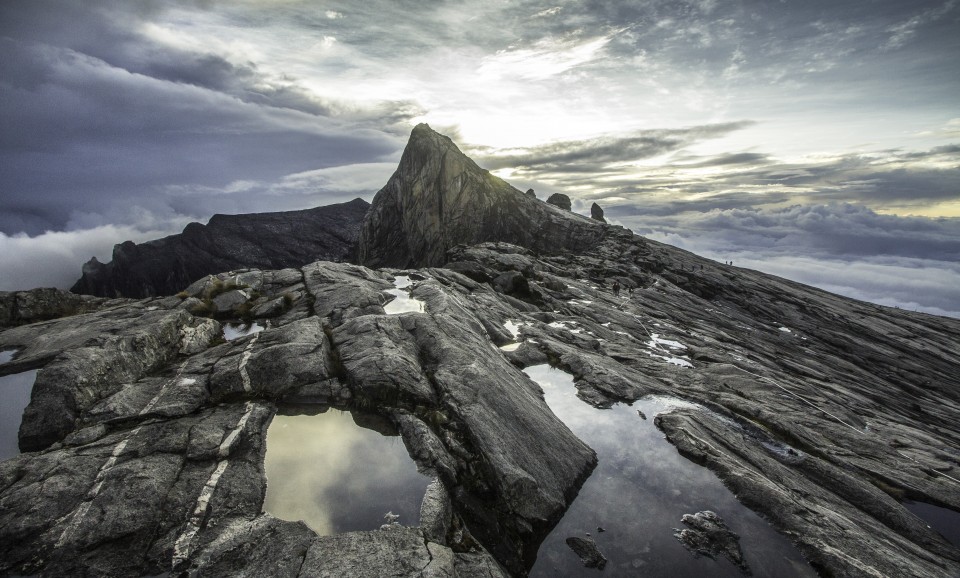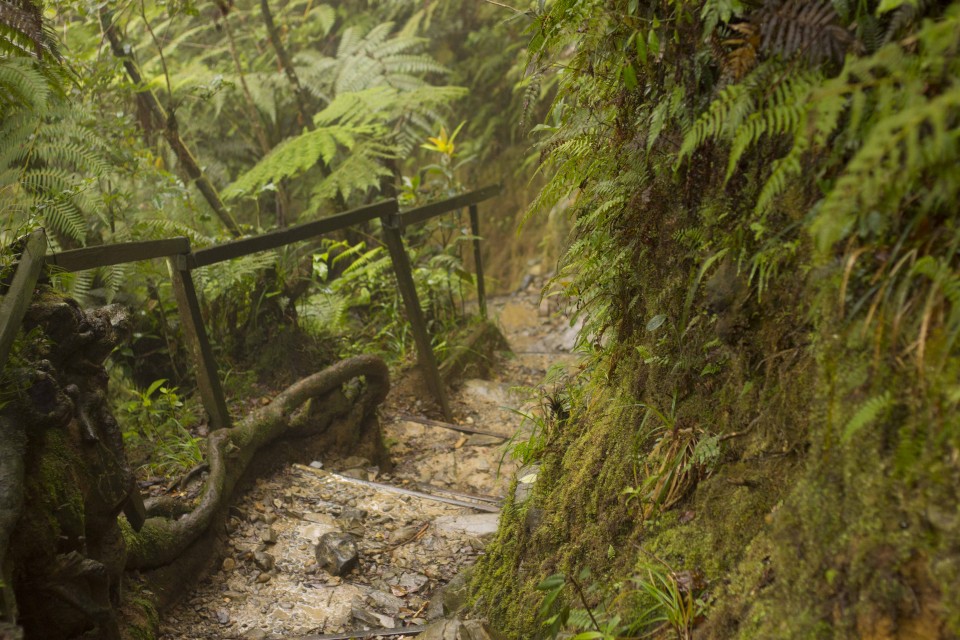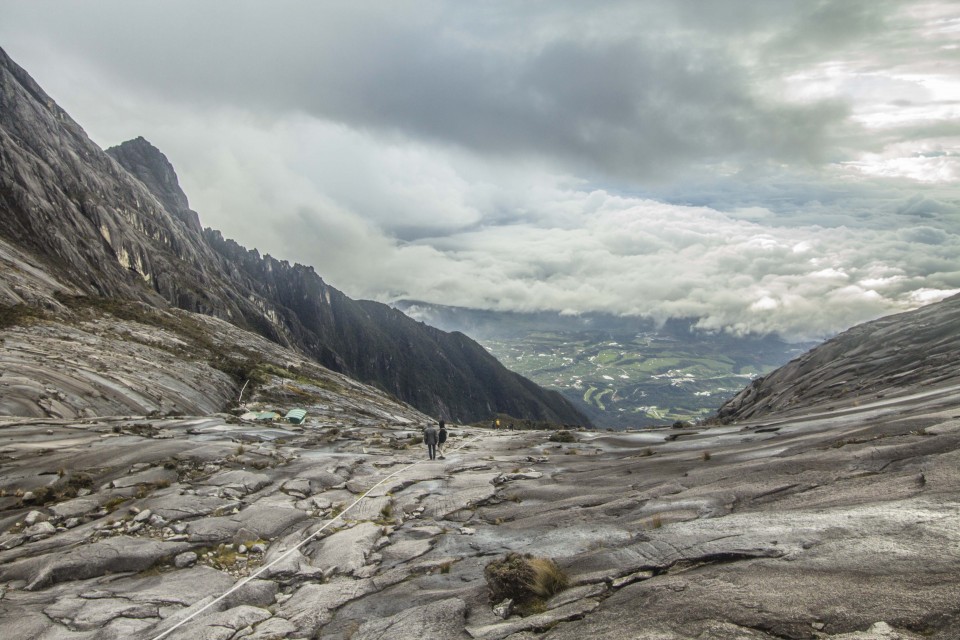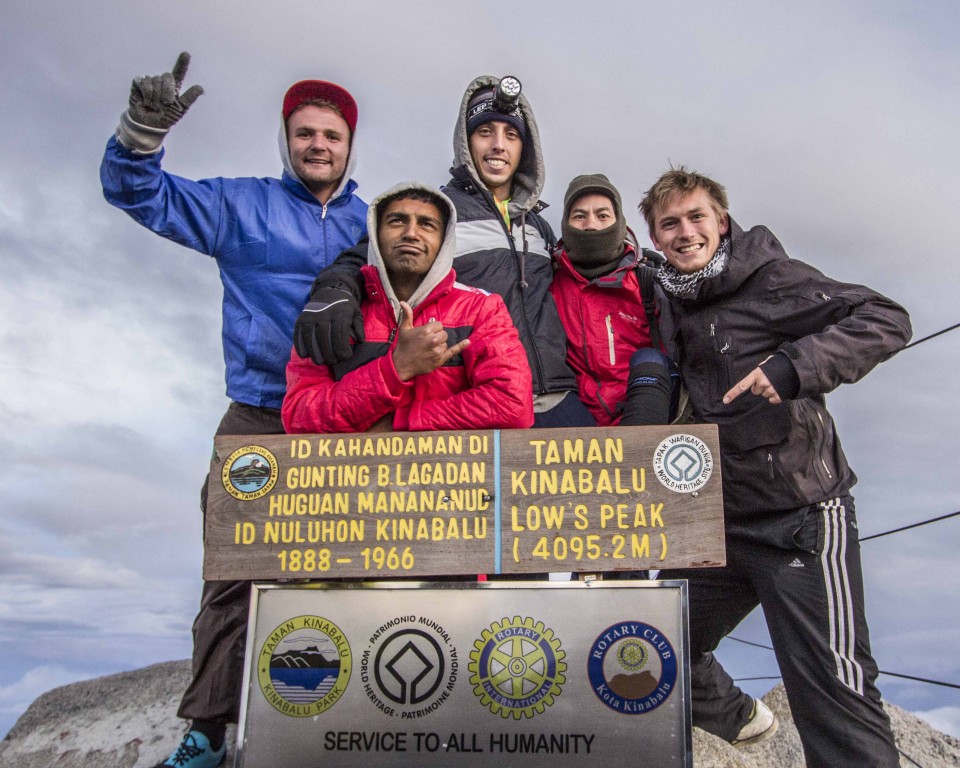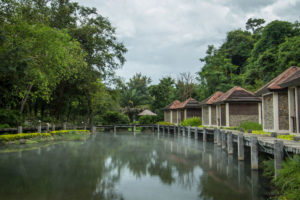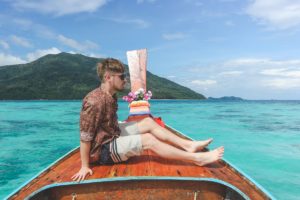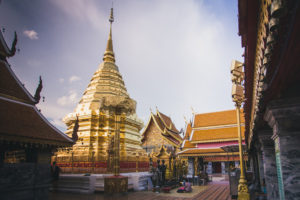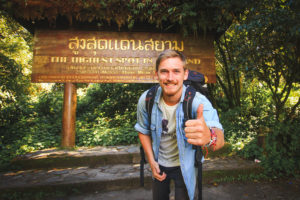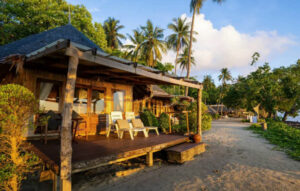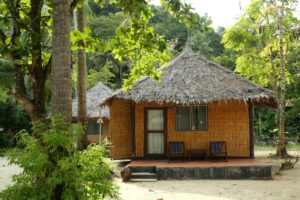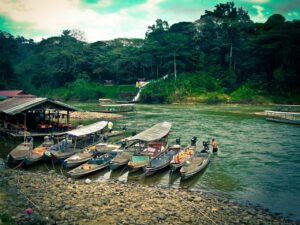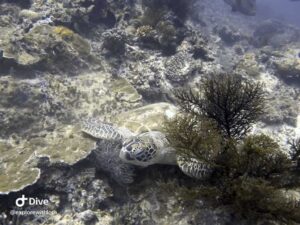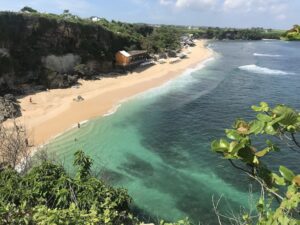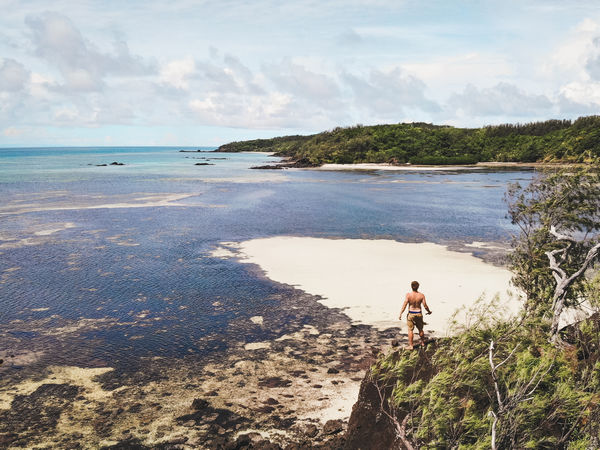Mount Kinabalu Guide
Climbing Mount Kinabalu on a Budget
Mount Kinabalu is the tallest mountain in Southeast Asia with a summit at 4095 metres.
This two-day hike takes you through the tropical jungle of Sabah Malaysia, straight up the steep mountain, and onto the barren granite capped peak.
Here you will find the essentials for climbing Mount Kinabalu and how to save some serious cash too!
Two Day Mount Kinabalu Climb
Kota Kinabalu to Mount Kinabalu
I meet a bunch of solo travelers Kota Kinabalu’s bus station in the early morning. We are waiting for the minivan from Kota Kinabalu to Mount Kinabalu’s Timphoon Gate to fill up and depart on time. The minivan journey up the mountain takes about 1.5 hours and costs just 15 RM (USD 4) one way.
For a solo traveler, this minivan the perfect opportunity to meet other travelers. I will explain shortly how you can share the cost of a guide and some serious cash doing this.
The van winds its way up the mountain pass, climbing higher into the clouds. The air temperature drops and soon the forest is filled with a thick fog. After 90 minutes the minivan arrives at the Timphoon Gate where the Mount Kinabalu National Park Headquarters is located.
Arranging a Guide
At the Timphoon Gate, hikers arrange into small groups, each group having a designated guide. Up to six people are allowed per guide.
As a solo traveler, a guide could get quite expensive. So here you can take the oppotunity to jump into another group with less than six people (i.e. people from your van). Even if a group is on a pre-organized list, you can insist on joining if there are less than six in total. There are no rules to say this isn’t allowed.
You can then store your excess luggage at the park headquarters. I recommend not carrying any more than 6kg including water. Pack wisely, and leave the rest behind.
Day 1 – Climb to Laba Rata Resthouse
The hike to the peak of Mount Kinabalu begins by ascending through a temperate forest of fern trees and waterfalls. Although the air is already much cooler than down in Kota Kinabalu, the humidity still sits about 95%.
The beginning of the trail is steep. It gives an idea of what lies ahead. They say you need a moderate level of fitness for climbing Mount Kinabalu, they’re not joking. If you are planning to climb to the peak of Mount Kinabalu, try fit 8 weeks of regular cardio exercise first.
Three hours into the hike and Borneo’s storm clouds unleash. Lighting cracks directly above and the torrential rain turns the trail into a fast flowing stream of water. Within 30 minutes everything I own is drenched. it is here I realize that decent wet weather gear would have been a really smart move.
After about 2 hours of relentless downpour, the rain eases and daylight returns. We continue ascending up the steep mountainside into colder air and thinner vegetation.
6 hours after beginning our ascent, we reach base camp. We have hiked 7 kilometers on this first day. The lodge feels like a haven where we can get a warm cup of tea and finally put our legs up to rest.
On arrival, we meet another group who had climbed the previous day. Due to the heavy rain over the past 24hrs, they were unable to climb to the summit that morning, making us slightly worried that the rain on the next morning may also prohibit us from reaching the summit.
Day 2 – Summit and Descend
The second day starts with a 2.30am wake-up call. It is dark, it is cold, and my fear has been realized that none of my clothes have dried overnight. In fact, they’re soaked. A Mount Kinabalu shirt from the gift shop is the only option for comfort and warmth.
Lesson learned: pack additional dry clothing.
By 3am we set off into the early morning darkness. The group walks in single file, illuminated by a line of bobbing headlamps. There is definitely a sense of excitement in the air as everyone slowly wakes up.
As we ascend to the peak of Mount Kinabalu the trail becomes steeper and more slippery. The trail to the summit is a steep granite surface. Without the assistance of the rope and two free hands, we would be slipping backward as quickly as climbing forwards.
The air also gets considerably thinner with altitude. Each step forwards becomes more and more exhausting. This is part of what makes climbing Mount Kinabalu so challenging.
The trail becomes more difficult to follow towards the summit. The best way to get to your top is just to follow your senses and head up. Watch out for any sheer drops off the edge of the cliff.
By 5am we reach the summit. The cold air blows with a gale-force strength over the barren granite cap. Luckily I had packed a decent jacket, otherwise, I’d be frozen solid while waiting for sunrise.
Soon the sun rises over the horizon and it brings warmth to everyone. We are rewarded with a spectacular view over Borneo and see the striations in the atmosphere we had just climbed our way through.
Far below we see the thick blanket of clouds. It is a reminder of the crazy weather we are yet to descend through towards Kota Kinabalu.
Climbing Mount Kinabalu was the first leg of my travels around Southeast Asia. What an incredible way to kick off an amazing trip. It is a memory that goes down on the top 5 experiences I’ve ever had. If you are a keen hiker then I highly recommend climbing to the peak of Mount Kinabalu.
After 60 countries of travel, Mount Kinabalu has only been matched in difficulty by my hike up Vanuatu’s volcanoes on the island of Ambrym.
How to Climb Mount Kinabalu Solo
Mount Kinabalu Permit – to summit Mount Kinabalu you will need a climbing permit, and to get this you must book accommodation on the mountain.
Accommodation – The only accommodation available on the mountain is the Laban Rata Guesthouse by Sutera Sanctuary Lodges. The website provides contact details but makes online bookings almost impossible. You will have to email or call them to make a booking directly. Alternatively, you can visit their office directly in Kota Kinabalu and hope for the best (location).
Transport – vans depart from Kota Kinabalu to Mount Kinabalu in the early morning. Tickets are about 25RM per person one way for the two-hour journey. Buses leave on a ‘when full’ basis and no set schedule.
Guide – a guide is required to climb the mountain and can be arranged at the national park HQ.
Weather at Mount Kinabalu
The weather at Mount Kinabalu can be just about anything, so you almost have to prepare for all conditions. The bottom of the mountain has a tropical climate with hot and humid conditions. The upper half of the mountain has a temperature climate with much cooler conditions, the air temperature can drop well below zero degrees.
It tends to rain all year round on Sabah so the term “dry season” is relative to the wetter season. Mount Kinabalu has two seasons worth noting:
- the wet season from November through to April
- the dry season from May through to October

Wet weather at Mount Kinabalu can make climbing conditions difficult. There is no vegetation on the granite capped summit, so water pours down in heavy streams. During heavy rain, the track from Laban Rata Resthouse to the summit can be closed to climbers as it gets too dangerous.
Can You Climb Mount Kinabalu in One Day?
Climbing Mount Kinabalu in one day is no longer permitted unless you are part of a special event such as the biannual Climbathon race. Participation in this race is by invite only.
It was possible to climb Mount Kinabalu in one day, prior to the 2015 earthquake which hit Sabah. The condition was that you had to make it to the top before 1pm which only gave 5 hours for the entire climb. That’s an insanely difficult challenge.
Unfortunately, there is just no other way around it than to pay for the monopolized and overpriced accommodation at the Laban Rata Resthouse.
7 Top Tips for Climbing Mount Kinabalu
- Pack warm clothing. The peak of Mount Kinabalu is literally windy and freezing, below zero degrees. You will be sitting up there for a while waiting for sunrise so pack some lightweight but warm clothing. Fleece is a great option.
- Take good waterproof gear. When it rains on Mount Kinabalu it pours. Take a decent raincoat and rain cover for your bag.
- Pack extra dry clothing. No matter how well you cover up in the rain you’re still going to get wet. Clothes don’t dry well in the cold damp air at the Laban Rata Resthouse.
Carry more water than you expect to need. You will get thirsty, and there is no drinkable water on the mountain until you reach the overnight rest house. - Do not drink water from the tanks. The water is not treated and you will get sick. Half of our climbing group came down with water poisoning right after the climb.
- Sleep early the night before summiting. You will be waking up extra early to see the sunrise at the summit, so sleep extra early too.
- Take it easy on the descent. Coming down the steep mountain is hard on your knees. If you have known problems with your knees then try packing some telescopic hiking sticks.
- Pack a headtorch, not a handheld torch. The climb to the peak of Mount Kinabalu is steep and slippery so you will need your hands on the rope as support. It’ll be near impossible carrying a torch and the rope.

